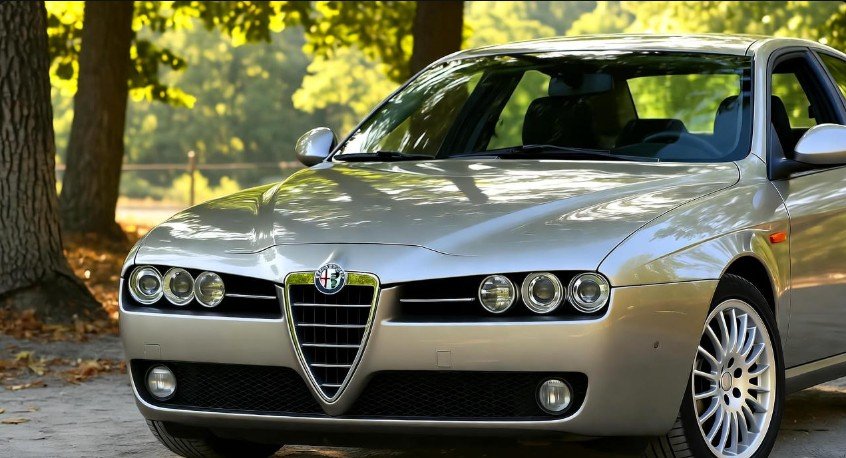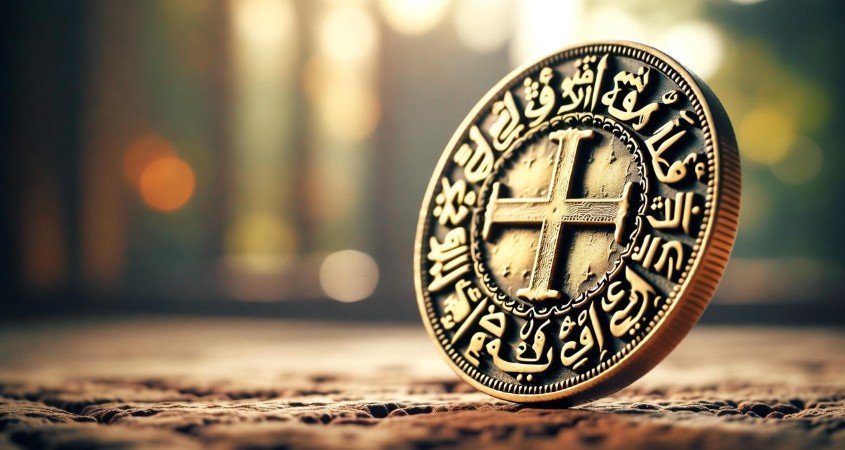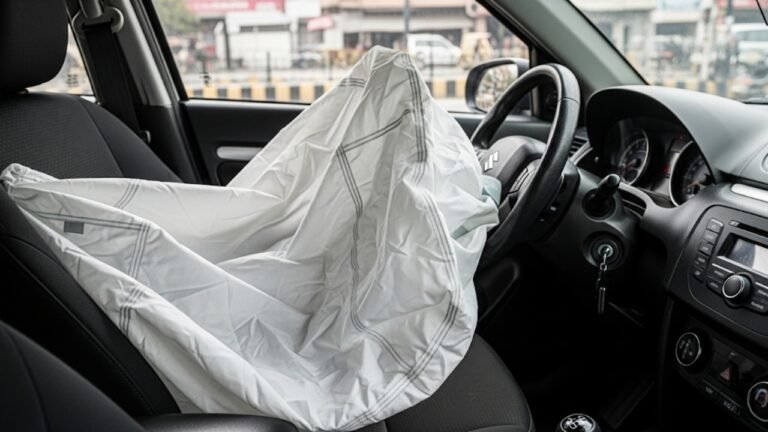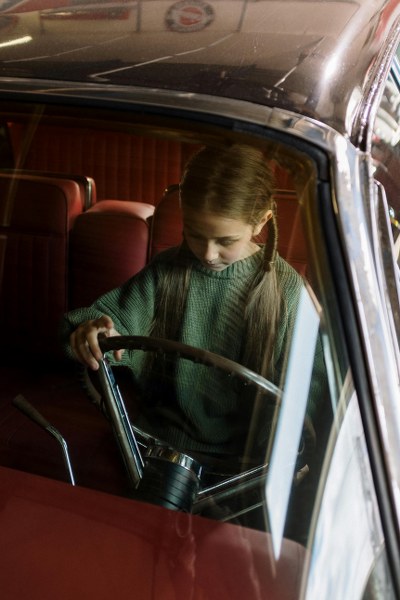What Does the Alfa Romeo Symbol Mean? Discover Its Hidden Power

When you see an Alfa Romeo glide past on the road, you can’t help but notice its unmistakable badge — a mysterious symbol that seems to whisper stories of power, elegance, and Italian heritage. For over a century, this emblem has represented more than just a car brand. It’s a blend of history, mythology, and art that reflects everything Alfa Romeo stands for — speed, passion, and prestige.
In this guide, we’ll uncover the hidden meaning behind the Alfa Romeo symbol, explore its historical roots, and decode the powerful message it carries. Whether you’re a car enthusiast, an Alfa Romeo owner, or simply someone curious about the emblem’s mystery, this story will make you see the brand in a whole new light.
The Magic Behind a Symbol: Why It Matters

Symbols have power — they tell stories that words often can’t. Think of the Ferrari prancing horse, the Lamborghini bull, or the Mercedes-Benz star. Each represents a legacy. But the Alfa Romeo symbol stands apart for its deep historical and cultural connections.
This emblem doesn’t just look beautiful — it means something. Every detail, from the red cross to the serpent devouring a man, has roots that reach back centuries into Milan’s history. To understand what the Alfa Romeo symbol means, you have to go beyond the metal and into the soul of Italy itself.
When you drive an Alfa Romeo, you’re not just behind the wheel of a car. You’re holding a piece of history — one that tells the story of courage, rebirth, and power.
The Birth of Alfa Romeo: Where It All Began
Before we explore the meaning of the emblem, it’s worth knowing where the brand started. Alfa Romeo was founded in 1910 in Milan, Italy, originally named Anonima Lombarda Fabbrica Automobili — or A.L.F.A. for short.
Milan wasn’t just a random choice. This city was the beating heart of Italian art, design, and industry. Every stone in Milan’s streets carries echoes of innovation and resilience. When Ugo Stella and Alexandre Darracq established the brand, they wanted something that embodied the essence of their city — its pride, courage, and creativity.
That’s why they chose a symbol tied deeply to Milan’s history — one that represented not just a place, but a spirit.
The Alfa Romeo Emblem: A Closer Look
At first glance, the Alfa Romeo emblem looks like a circle divided into two distinct halves — but each side tells a story of its own.
-
On the left, you’ll see a red cross on a white background.
-
On the right, a green serpent (Biscione) appears, swallowing a human figure.
Surrounding both symbols is a circular band that proudly spells out “Alfa Romeo.” Together, these elements merge Milanese history with Italian elegance and create one of the most recognizable logos in automotive history.
This emblem isn’t just decoration. It’s a declaration — a badge of identity. Every Alfa Romeo car, from the classic Giulia to the modern Stelvio, carries this mark as a reminder of the brand’s unbreakable connection to its roots.
The Biscione: The Serpent of Milan
Now, let’s dive into the most mysterious part — the Biscione, or the serpent swallowing a man. At first glance, this image might seem strange or even unsettling. Why would a luxury car brand choose such a fierce symbol?
The answer lies in Milan’s medieval past. The Biscione was the family crest of the Visconti dynasty, rulers of Milan during the 14th century. Legend has it that the Viscontis adopted this symbol after a knight named Ottone Visconti fought a fierce battle during the First Crusade and took this emblem from a defeated enemy. Over time, the serpent came to represent power, transformation, and rebirth.
In the Alfa Romeo logo, the Biscione represents strength and resilience — the ability to rise again no matter what challenges lie ahead. The human figure isn’t about destruction but renewal. It signifies the birth of something stronger, something reborn — just like Alfa Romeo itself, which has survived wars, economic struggles, and countless reinventions.
The serpent’s green color is also symbolic. Green represents growth, life, and energy — all essential traits of the brand’s philosophy.
The Red Cross: A Tribute to Milan
On the left half of the Alfa Romeo emblem, the red cross on a white background pays tribute to Milan’s flag. This symbol has existed for centuries, often associated with Saint George, the patron saint of soldiers, and Saint Ambrose, Milan’s protector.
This red cross doesn’t just symbolize faith. It represents courage, protection, and purity — qualities that mirror Alfa Romeo’s approach to craftsmanship. The cross reflects the brand’s dedication to clean design and pure engineering.
Every Alfa Romeo car embodies this idea — blending elegance with purpose. The red cross reminds the world that behind the car’s beauty lies a strong moral and historical foundation. It’s not just about style — it’s about substance.
The Connection Between the Two Symbols
When combined, the Biscione and the red cross tell a complete story. The cross speaks of Milan’s spiritual and cultural strength, while the serpent embodies raw power and transformation. Together, they form a balance between faith and force, heritage and progress — the perfect reflection of Alfa Romeo’s philosophy.
This union also mirrors the brand’s approach to design: balancing art and performance, beauty and function, tradition and innovation.
In a sense, the Alfa Romeo emblem is like the car itself — a marriage of contrasts that somehow feels perfectly harmonious.
The Evolution of the Alfa Romeo Logo
Over the decades, the Alfa Romeo symbol has evolved, but its soul has stayed the same. The first version appeared in 1910, hand-painted by a draftsman named Romano Cattaneo. The outer ring was decorated with small knots and bore the name ALFA-MILANO.
When the company merged with engineer Nicola Romeo in 1915, the brand became Alfa Romeo, and the emblem was updated to include his name. Later, when Italy transitioned through various eras — monarchy, war, and modernism — the logo subtly changed too, losing the knots and gaining a cleaner, more refined look.
Here’s a simple summary of how the emblem evolved over time:
| Year | Change | Meaning |
|---|---|---|
| 1910 | Original emblem with ALFA-MILANO | Tribute to Milan and the Visconti family |
| 1915 | Addition of ROMEO | Merged with Nicola Romeo’s name |
| 1946 | Simplified design post-WWII | New beginnings for the brand |
| 1972 | Removal of “Milano” | Global expansion |
| 2015 | Modern minimalist redesign | Sleek, contemporary identity |
Through every change, Alfa Romeo made sure the emblem never lost its Milanese essence. The brand evolved, but its heritage remained untouched — proof that true legacy adapts without forgetting its roots.
Modern Interpretations: The Quadrifoglio Connection
While the main emblem tells one story, there’s another symbol closely tied to Alfa Romeo — the Quadrifoglio, or the four-leaf clover. This small green cloverleaf appears on the brand’s high-performance models, such as the Giulia Quadrifoglio and Stelvio Quadrifoglio.
The story of this emblem begins in 1923 when Alfa Romeo racer Ugo Sivocci painted a four-leaf clover on his car for good luck. He went on to win the Targa Florio race that year. Sadly, Sivocci died a few months later while testing a car that didn’t have the clover on it. Since then, the Quadrifoglio became a symbol of protection and victory, representing Alfa Romeo’s racing spirit.
Today, when you see an Alfa Romeo with a green clover, you know it’s built for speed, passion, and excellence. The Quadrifoglio is to Alfa Romeo what the M badge is to BMW — a sign of pure performance.
Alfa Romeo: More Than Just a Car Brand
What makes Alfa Romeo truly special is that it isn’t just about horsepower or luxury. It’s about emotion. The brand has always embraced the Italian philosophy of “La Meccanica delle Emozioni” — the mechanics of emotion.
Every curve, sound, and drive in an Alfa Romeo is designed to make you feel something. And that feeling starts the moment you see the emblem — that proud red cross and serpent, representing courage, passion, and rebirth.
For many drivers, owning an Alfa isn’t about showing off. It’s about being part of a story — one that’s been written for over 100 years, filled with triumphs, struggles, and reinvention.
The Symbol’s Hidden Power
So, what is the hidden power of the Alfa Romeo symbol?
It’s not just in its visual beauty — it’s in what it makes you feel. It represents heritage and modernity, strength and elegance, logic and emotion. It reminds you that true greatness is born when history and innovation walk hand in hand.
In a world where most car logos are abstract or commercial, Alfa Romeo’s stands out because it means something real. It connects you to Milan’s history, Italian artistry, and human spirit.
That’s why every time you see an Alfa Romeo, it feels alive — almost as if the serpent itself is breathing through its badge.
The Modern Alfa Romeo: Heritage Meets Innovation
In today’s automotive world, Alfa Romeo continues to honor its history while pushing the boundaries of innovation. The emblem remains a constant, connecting past and present. Modern Alfa Romeos, from the Giulia to the Tonale, carry the iconic badge proudly on their grille, serving as a reminder that every car is more than just metal and rubber — it’s a living symbol of Italian craftsmanship and performance.
The badge’s Biscione and red cross have been subtly modernized in recent years, with cleaner lines and refined shapes to fit contemporary aesthetics. Even in a minimalist era of design, the emblem retains its historical depth. It tells a story at a glance: Alfa Romeo is a brand that respects its roots while embracing the future. This balance between tradition and innovation is what makes the symbol so powerful.
How the Emblem Shapes Alfa Romeo’s Identity
The Alfa Romeo symbol isn’t just decorative; it shapes the brand’s entire identity. When you see the badge, it evokes certain expectations: passion, precision, and prestige. The emblem embodies the very essence of what it means to drive an Alfa Romeo — spirited performance, bold design, and a connection to Italian artistry.
For Alfa Romeo, the symbol works as both a historical anchor and a promise to drivers. It signifies that no matter how advanced technology becomes, the car will maintain the brand’s core values: elegance, agility, and emotional connection. The emblem reassures enthusiasts that they are not just driving a car — they are carrying a legacy.
The Emotional Pull of the Alfa Romeo Logo
There’s an emotional layer to the Alfa Romeo emblem that few brands can match. Its design evokes intrigue, power, and sophistication. The serpent devouring the human figure may seem intense, but it resonates with the thrill of life, rebirth, and resilience.
Owners often speak about the emotional connection they feel with their cars. It’s not just about speed or luxury; it’s about pride in being part of a story that stretches back over a century. The Alfa Romeo badge acts as a constant reminder of this lineage, making each drive a journey through history and culture.
Symbolism Compared: Alfa Romeo vs Other Automakers
When compared to other luxury brands, Alfa Romeo’s emblem stands out for its narrative depth. For example:
| Brand | Symbol | Meaning |
|---|---|---|
| Ferrari | Prancing Horse | Power, agility, Italian racing legacy |
| Lamborghini | Bull | Strength, aggression, zodiac sign of founder |
| Mercedes-Benz | Three-Pointed Star | Dominance over land, sea, and air |
| Alfa Romeo | Red Cross & Biscione | Milanese heritage, rebirth, power, elegance |
Unlike many modern logos that lean toward abstract minimalism, Alfa Romeo’s emblem is storied, detailed, and historically anchored. It tells a full narrative in a single glance — a quality that strengthens brand loyalty and emotional resonance.
The Emblem’s Influence on Car Design
The Alfa Romeo symbol has influenced more than just branding; it affects the car’s design philosophy. Every line, curve, and grille detail is informed by the emblem’s balance of elegance and aggression. Designers often cite the Biscione’s dynamic movement as inspiration for aerodynamic contours, while the cross reflects clean, structured forms that echo precision engineering.
Even the interiors carry subtle nods to heritage, like stitching patterns and badge placements that remind drivers of the emblem’s story. The emblem isn’t just a logo — it’s a guiding principle in the car’s DNA.
Why the Alfa Romeo Symbol Resonates Globally
The Alfa Romeo badge transcends borders because its symbolism is universally compelling. It tells a story of power, transformation, and pride, qualities that resonate across cultures. While deeply rooted in Milanese history, the emblem communicates values that anyone can understand: resilience, excellence, and passion.
This universality is why the brand enjoys global recognition despite being smaller than other luxury automakers. People don’t just see a car; they see a legacy of performance and artistry. The emblem communicates instantly — it’s a visual shorthand for a century of Italian excellence.
Bullet Points: Key Takeaways About the Alfa Romeo Symbol
-
Biscione (serpent): Represents Milanese power, renewal, and strength.
-
Red cross on white background: Tribute to Milan’s flag, saints, and purity.
-
Quadrifoglio (four-leaf clover): Symbol of racing heritage and high-performance models.
-
Evolution: Subtle changes over time preserved historical essence while modernizing design.
-
Global appeal: Symbol communicates Italian elegance, power, and rebirth universally.
Frequently Asked Questions
1. What does the Alfa Romeo symbol represent?
The emblem represents heritage, power, and transformation, connecting the brand to Milan’s history and Italian pride.
2. Why is there a serpent eating a man on the logo?
The Biscione symbolizes strength, wisdom, and rebirth, originating from Milan’s Visconti family crest.
3. What is the significance of the red cross?
It pays homage to Milan’s flag and saints, representing courage, purity, and the city’s historical influence.
4. How does the logo relate to Alfa Romeo’s Italian roots?
The colors and symbols reflect Milanese and Italian history, showcasing pride in the country’s culture and craftsmanship.
5. Why did Alfa Romeo adopt the Quadrifoglio?
The four-leaf clover symbolizes racing luck, victory, and high-performance lineage, inspired by driver Ugo Sivocci.
6. Has the emblem changed over time?
Yes, Alfa Romeo has modernized the emblem for clarity and style, but core symbols — the cross and Biscione — remain intact.
7. Why is the Alfa Romeo logo considered unique?
Unlike minimalist or abstract logos, it tells a story rich in history, emotion, and identity, making it globally recognizable.
8. Does the emblem influence car design?
Absolutely. The emblem’s elements inspire both exterior curves and interior design, reflecting elegance, precision, and performance.
Final Thoughts: More Than Just a Logo
The Alfa Romeo symbol is far more than a badge on a grille. It’s a living emblem of history, culture, and emotion. From the fierce Biscione to the dignified red cross, every detail tells a story of Italian craftsmanship, Milanese heritage, and human ingenuity.
Next time you see an Alfa Romeo, take a moment to appreciate the emblem. It’s not just a symbol; it’s a legacy — a reminder that behind every curve, every roar of the engine, lies a century of passion, power, and artistry. The hidden power of Alfa Romeo isn’t just under the hood; it’s proudly displayed on the badge that has captivated enthusiasts for generations.





